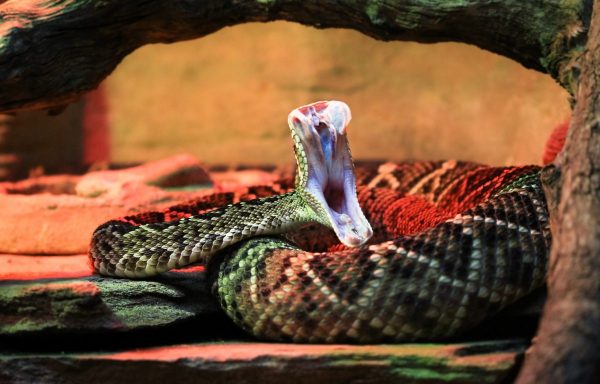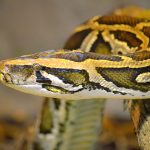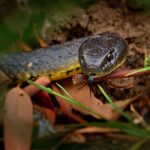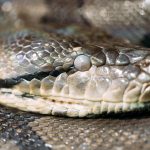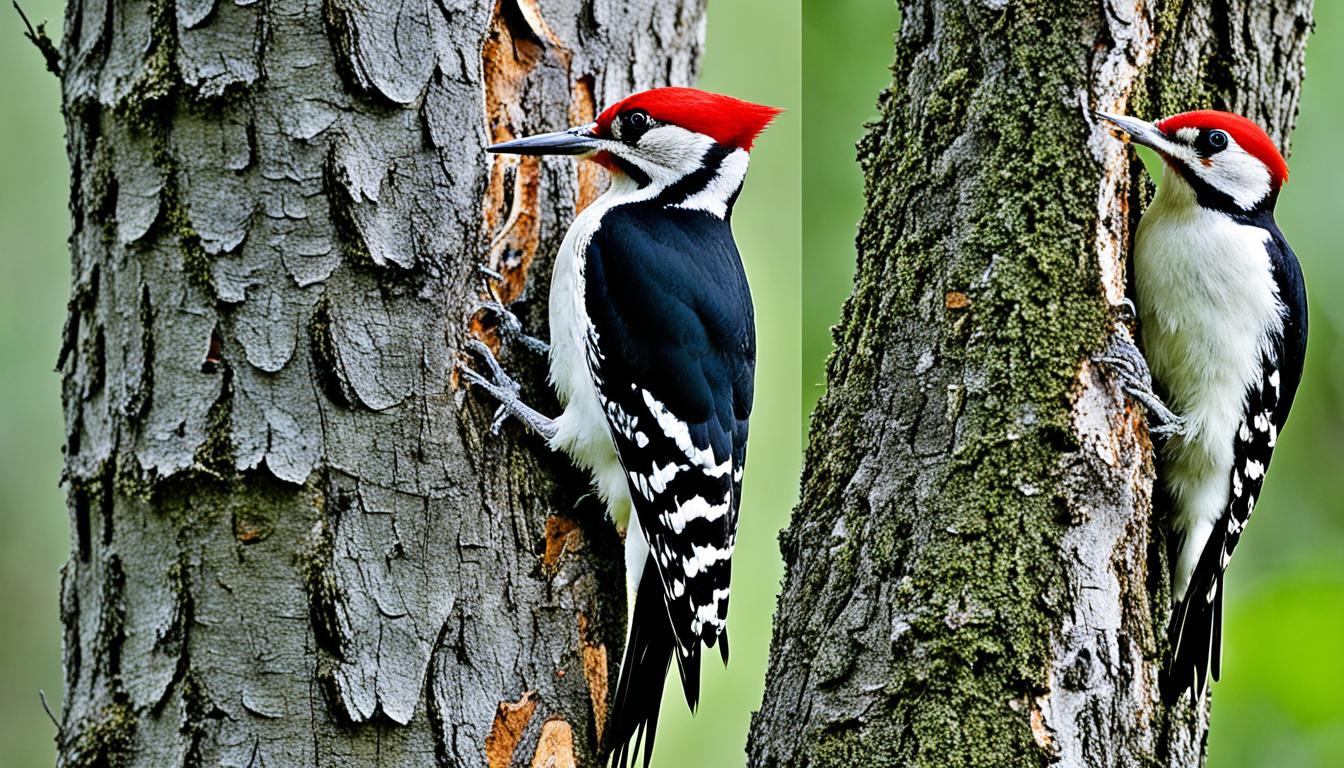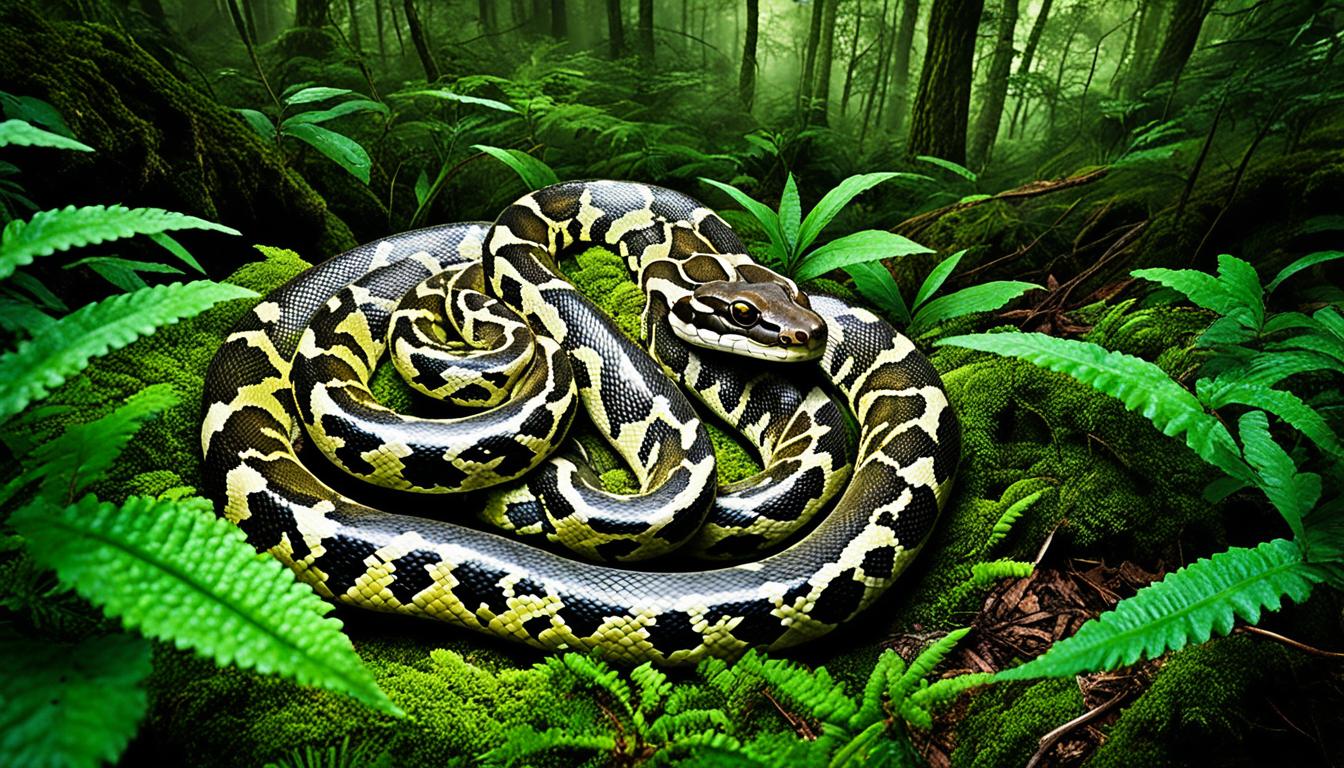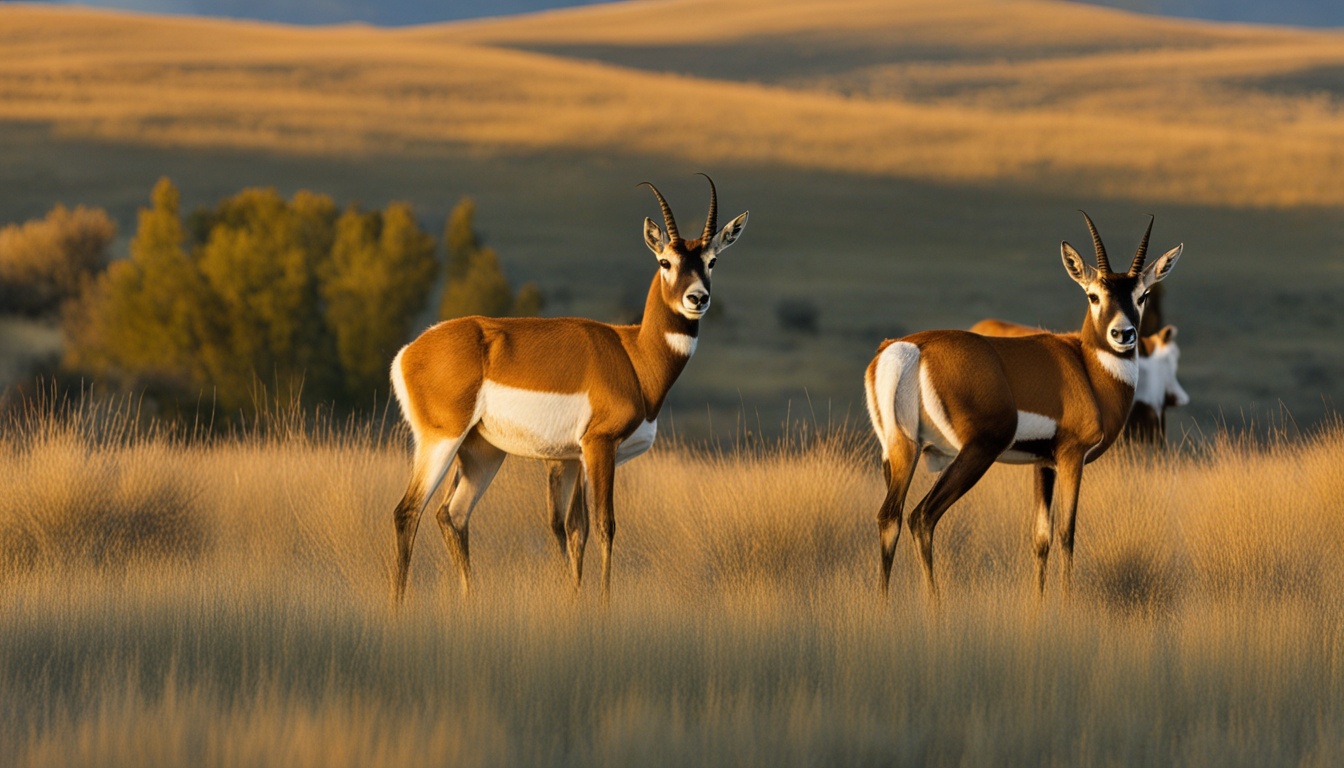Overview of Venomous Snakes in Russia
Venomous snakes are found throughout various regions of Russia, posing a potential threat to both humans and wildlife. These snakes belong to different families, including Viperidae and Elapidae, and are known for their venomous bites. It is important to understand the physical characteristics, distribution, habitat, and behavior of these snakes in order to minimize encounters and prevent snakebite incidents.
Russian venomous snakes exhibit diverse physical characteristics that aid in their identification. Most notably, they possess long fangs through which they inject venom into their prey or potential threats. Additionally, many species have triangular-shaped heads and distinct patterns or colors on their scales that serve as camouflage within their natural environments. Understanding these features can help individuals distinguish between venomous and non-venomous snake species.
The distribution of venomous snakes in Russia varies across its vast territory. They can be found in different habitats such as forests, grasslands, wetlands, mountains, and even urban areas. Some common species include the European adder (Vipera berus), steppe viper (Vipera ursinii), Caucasian viper (Macrovipera lebetina), Siberian pit viper (Gloydius halys), Levantine viper (Macrovipera lebetina obtusa), Caspian cobra (Naja oxiana), and Central Asian cobra (Naja naja oxiana). Their presence highlights the adaptability of these reptiles to diverse climatic conditions throughout Russia’s expansive landscape.
By understanding the overview of venomous snakes in Russia – including their physical characteristics, distribution patterns across various habitats – individuals can better equip themselves with knowledge necessary for prevention strategies when encountering these potentially dangerous creatures. Being aware of one’s surroundings while exploring nature or living in snake-prone areas is crucial for minimizing risks associated with snakebites.
Physical Characteristics of Russian Venomous Snakes
Russian venomous snakes exhibit a range of physical characteristics that set them apart from non-venomous species. One notable feature is their specialized fangs, which are hollow and allow for the efficient delivery of venom into their prey or potential threats. These fangs can be found in the upper jaw and are often retractable when not in use.
Another distinguishing characteristic of Russian venomous snakes is their triangular-shaped heads. This shape is due to the presence of venom glands located behind their eyes, causing the head to appear wider than the neck. The distinct head shape serves as a warning sign to potential predators or individuals who may accidentally encounter these snakes.
Furthermore, many Russian venomous snake species possess vibrant coloration patterns on their scales, serving both as camouflage and warning signals. Some display bright colors such as red, yellow, or orange interspersed with darker tones like black or brown. This combination helps them blend into their surroundings while also alerting others to stay away.
These physical traits collectively contribute to the survival and success of Russian venomous snakes in various habitats across Russia’s vast landscape. Understanding these characteristics can aid researchers and enthusiasts alike in identifying these potentially dangerous reptiles accurately.
Distribution and Habitat of Venomous Snakes in Russia
Venomous snakes can be found in various regions of Russia, each with its own unique distribution and habitat. One such region is the Caucasus Mountains, where species like the Caucasian viper and Levantine viper are commonly found. These snakes prefer rocky areas and can often be spotted basking in the sun on cliffs or rock formations. They are also known to inhabit forests and meadows within this region.
Moving towards central Russia, one may come across venomous snake species such as the European adder and steppe viper. These snakes thrive in a wide range of habitats including grasslands, marshes, woodlands, and even suburban areas. The European adder is particularly adaptable and has been observed in diverse environments ranging from coastal dunes to mountain slopes.
Venturing further east into Siberia, we encounter venomous snake species like the Siberian pit viper and Mongolian racerunner. These snakes have adapted to survive in harsh climates characterized by long winters with freezing temperatures. They primarily inhabit forested areas near rivers or lakes where they can find prey during warmer months.
The distribution patterns of venomous snakes in Russia highlight their ability to adapt to different habitats across vast geographical regions. From mountains to plains, these reptiles have carved out niches for themselves throughout the country’s diverse ecosystems. Understanding their specific distributions helps researchers monitor populations effectively while also providing valuable information for conservation efforts aimed at protecting these often misunderstood creatures.
Venomous Snakebites in Russia: Incidents and Statistics
Venomous snakebites in Russia have been a cause for concern, with numerous incidents reported across the country. Statistics reveal that these bites occur most frequently during the warmer months, when snakes are more active and encounters with humans become more likely. The majority of snakebite incidents happen in rural areas where people come into closer contact with snakes due to agricultural activities or outdoor recreation.
The statistics indicate that venomous snakebites in Russia primarily involve two species: the European adder (Vipera berus) and the steppe viper (Vipera renardi). These snakes are responsible for the majority of envenomation cases reported. While fatalities from snakebites are relatively rare, it is crucial to seek immediate medical attention after a bite as complications can arise if left untreated.
Efforts have been made to raise awareness about venomous snakes and promote preventive measures among local communities. Educational campaigns emphasize precautions such as wearing protective clothing, using proper footwear, and avoiding tall grass or rocky areas where snakes may hide. Additionally, medical facilities in high-risk regions have improved their capabilities to provide timely treatment for snakebite victims.
Understanding the incidents and statistics related to venomous snakebites in Russia helps highlight the importance of public education on how to prevent encounters with these reptiles and respond appropriately when bitten. By promoting knowledge about venomous snakes’ behavior and habitats, individuals can minimize potential risks associated with these fascinating but potentially dangerous creatures present throughout various parts of Russia’s diverse ecosystems.
Dangerous Encounters: Venomous Snake Species in Russia
Venomous snakes can be found in various regions of Russia, posing a potential danger to humans and wildlife alike. One of the most notorious species is the European adder (Vipera berus), which is widely distributed across the country. These venomous snakes are known for their distinctive zigzag pattern along their backs and can deliver a painful bite if provoked or threatened.
Another venomous snake species commonly encountered in Russia is the steppe viper (Vipera renardi). Found primarily in southern parts of the country, these snakes have a more elongated body compared to other vipers. Their venom contains potent toxins that can cause severe symptoms if not treated promptly.
The third significant venomous snake species in Russia is the Siberian pit viper (Gloydius halys). As its name suggests, this snake inhabits the colder regions of northern Russia, including Siberia. Despite living in harsh climates, these vipers have adapted well and possess unique physiological characteristics that allow them to survive extreme cold temperatures.
Encounters with these venomous snakes should be approached with caution as they can pose serious threats to human health. It is crucial for individuals venturing into areas where these snakes reside to be aware of their presence and take necessary precautions such as wearing protective clothing and footwear, avoiding tall grasses or rocky areas where they may hide, and refraining from provoking or handling them unnecessarily.
Understanding the different species of venomous snakes present in Russia helps raise awareness about potential dangers associated with encounters. By respecting their habitats and taking appropriate measures when venturing into snake-inhabited areas, we can reduce both human-snake conflicts and instances of snakebite incidents.
Venomous Snakes in Northern Russia: Adaptation to Cold Climates
Venomous Snakes in Northern Russia: Adaptation to Cold Climates
Northern Russia is known for its harsh and unforgiving winters, with temperatures dropping well below freezing. Despite these extreme conditions, venomous snakes have managed to adapt and survive in this cold climate. One of the key adaptations of these snakes is their ability to hibernate for long periods during the winter months.
During hibernation, venomous snakes in northern Russia seek out burrows or other sheltered areas where they can remain dormant until spring arrives. They lower their metabolic rate significantly, conserving energy and reducing their need for food. This allows them to survive without eating for several months when prey is scarce.
Another adaptation that venomous snakes in northern Russia have developed is a thicker layer of insulating scales on their bodies. These scales help them retain heat and prevent excessive loss of body temperature during the cold winter months. Additionally, some species may change coloration during this time to blend in better with the snowy surroundings, providing camouflage from potential predators.
These remarkable adaptations enable venomous snakes in northern Russia to not only survive but thrive in extremely cold climates. By hibernating and conserving energy during winter, as well as having specialized physical characteristics such as insulating scales, these snakes have found ways to overcome the challenges posed by their environment and continue their existence even under such adverse conditions.
Research continues into understanding more about how these adaptations work and how they contribute to the overall survival of venomous snake populations in northern Russia. Such knowledge will be crucial for conservation efforts aimed at protecting these unique creatures amidst ongoing environmental changes affecting their habitats.
Conservation Efforts and Challenges for Russian Venomous Snakes
Conservation efforts for Russian venomous snakes face numerous challenges. One major challenge is habitat loss and fragmentation due to human activities such as urbanization, agriculture, and infrastructure development. As natural habitats shrink, snake populations become more vulnerable to extinction. Efforts are being made to protect and restore these habitats through the establishment of protected areas and conservation programs aimed at preserving suitable snake habitats.
Another challenge in conserving Russian venomous snakes is the illegal wildlife trade. Some species of venomous snakes are highly sought after for their skins, meat, or medicinal properties. This leads to illegal collection and trafficking of these snakes, further endangering their populations. Conservation organizations work closely with law enforcement agencies to combat this illicit trade by conducting raids on black markets and raising awareness about the importance of protecting these species.
Climate change also poses a significant threat to Russian venomous snakes. Changes in temperature patterns can disrupt hibernation cycles and alter breeding seasons, affecting the survival rates of snake populations. Additionally, shifts in precipitation patterns can impact prey availability for these snakes, leading to food scarcity issues. Scientists are studying the potential impacts of climate change on venomous snake populations in order to develop strategies that will help them adapt and survive in changing environments.
Therefore it is crucial that ongoing conservation efforts continue despite these challenges faced by Russian venomous snakes’ preservation; otherwise we risk losing valuable components of Russia’s biodiversity forever
Identifying Venomous Snakes in Russia: Tips and Precautions
When it comes to identifying venomous snakes in Russia, there are a few key tips and precautions that can help individuals stay safe. Firstly, it is important to familiarize oneself with the physical characteristics of venomous snakes found in the region. This includes studying their color patterns, head shape, and size. Venomous snakes in Russia often have triangular-shaped heads and vibrant colors such as red or yellow bands.
Another important tip is to be aware of the habitat where these snakes are commonly found. Venomous snakes in Russia can be found in various environments including forests, grasslands, and even urban areas. It is crucial to exercise caution when venturing into these habitats and avoid tall grasses or rocky areas where they may hide.
Lastly, if you encounter a snake and are unsure whether it is venomous or not, it is best to err on the side of caution. Avoid provoking or approaching the snake and give it ample space to retreat without feeling threatened. If possible, try to take note of its features from a safe distance for later identification by experts.
By following these tips and taking necessary precautions when encountering snakes in Russia’s diverse landscapes, individuals can reduce their risk of being bitten by a venomous species. Remembering key physical characteristics while respecting their natural habitats will go a long way towards ensuring both personal safety and conservation efforts for these unique creatures.
Traditional Beliefs and Cultural Significance of Russian Venomous Snakes
Russian venomous snakes have long held a significant place in the traditional beliefs and cultural practices of the country. These snakes are often seen as symbols of power, wisdom, and protection. In some regions, they are even considered sacred creatures that possess supernatural abilities.
One common belief is that venomous snakes can bring good fortune and ward off evil spirits. It is believed that having a snake’s skin or fangs in one’s possession can provide protection against harm and bring luck to the owner. As a result, these items are sometimes used in rituals or kept as talismans.
In addition to their perceived spiritual significance, Russian venomous snakes also play a role in folklore and mythology. They are often depicted as cunning creatures with mystical powers. Stories featuring these snakes highlight their ability to outsmart humans or bestow magical gifts upon those who encounter them.
The cultural significance of Russian venomous snakes extends beyond superstitions and legends. They have also influenced various art forms such as literature, paintings, sculptures, and traditional crafts. Their striking appearance and intriguing behavior have inspired artists throughout history to capture their essence through different mediums.
Overall, the traditional beliefs surrounding Russian venomous snakes reflect the deep connection between nature and culture in this vast country. These beliefs not only showcase people’s fascination with these reptiles but also demonstrate how they continue to shape Russia’s rich cultural heritage today.
Are the Most Venomous Snakes in Europe Also Found in Russia?
Russia is home to a variety of venomous snakes found in europe. These snakes, such as the common viper and the European adder, can be found across the country. While Russia’s vast size allows for a wide range of snake species, some of the most venomous ones in Europe can also be found within its borders.
Research and Scientific Studies on Venomous Snakes in Russia
Research and scientific studies on venomous snakes in Russia have provided valuable insights into their behavior, ecology, and conservation. These studies aim to enhance our understanding of these fascinating creatures and develop effective strategies for their management.
One area of research focuses on the venom composition of Russian venomous snakes. Scientists have conducted extensive analyses to identify the specific toxins present in snake venoms, as well as their potential medical applications. This research has led to the discovery of novel compounds with therapeutic properties that could be used in the development of new drugs or antivenoms.
Another important aspect of scientific studies is investigating the ecological roles played by venomous snakes in Russian ecosystems. By studying their feeding habits, prey preferences, and interactions with other species, researchers can assess their impact on local biodiversity and ecosystem dynamics. This information is crucial for designing conservation plans that ensure the long-term survival of both venomous snakes and their habitats.
Furthermore, scientists are actively engaged in monitoring changes in snake populations across different regions of Russia. Through field surveys and data analysis, they strive to understand how factors such as habitat loss, climate change, or human activities influence snake abundance and distribution patterns. Such knowledge is vital for implementing effective conservation measures tailored to each species’ needs.
The ongoing research efforts regarding venomous snakes in Russia play a fundamental role in expanding our knowledge about these enigmatic reptiles. By shedding light on various aspects such as venom composition, ecological roles, population trends,and threats faced by these species,the findings contribute significantly towards formulating evidence-based conservation strategies that safeguard both human interests and wildlife diversity within this vast country’s borders.
What are some examples of venomous snakes found in Russia?
Some examples of venomous snakes found in Russia include the common European adder, the steppe viper, and the Caucasian viper.
What are the physical characteristics of venomous snakes in Russia?
Venomous snakes in Russia can vary in size and coloration, but they typically have triangular heads, elliptical pupils, and a pair of hollow fangs used for injecting venom.
Where are venomous snakes in Russia commonly found?
Venomous snakes in Russia can be found in various habitats, including forests, grasslands, wetlands, and rocky areas. They are distributed throughout different regions of the country.
How common are venomous snakebites in Russia?
Venomous snakebites in Russia are relatively uncommon, with only a small number of reported incidents each year. However, it is still important to take precautions when encountering snakes in their natural habitats.
Which venomous snake species in Russia are considered particularly dangerous?
Some venomous snake species in Russia, such as the steppe viper and the Caucasian viper, are considered more dangerous due to the potency of their venom and their potential to cause severe symptoms.
How do venomous snakes in northern Russia adapt to cold climates?
Venomous snakes in northern Russia have adapted to cold climates by hibernating during the winter months and seeking out warm microhabitats, such as rock crevices or underground burrows.
What challenges do venomous snakes in Russia face in terms of conservation?
Venomous snakes in Russia face conservation challenges due to habitat loss, persecution by humans, and the illegal wildlife trade. Efforts are being made to protect their habitats and raise awareness about their importance in ecosystems.
How can one identify venomous snakes in Russia and take precautions?
To identify venomous snakes in Russia, it is important to familiarize oneself with their physical characteristics and consult field guides or experts. Taking precautions, such as wearing protective clothing and avoiding unnecessary contact, can reduce the risk of snakebite.
Are venomous snakes in Russia culturally significant?
Yes, venomous snakes in Russia hold cultural significance in traditional beliefs and folklore. They are often associated with certain deities or seen as symbols of protection or spiritual power.
What research and scientific studies have been conducted on venomous snakes in Russia?
Research and scientific studies on venomous snakes in Russia have focused on various aspects, including their behavior, ecology, venom composition, antivenom development, and population dynamics. These studies contribute to our understanding and conservation of these reptiles.

